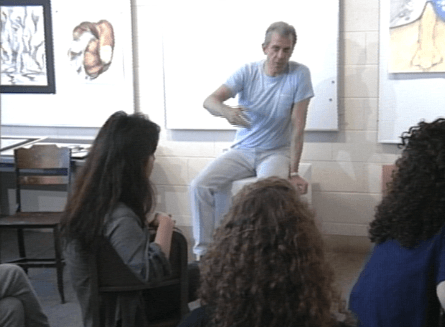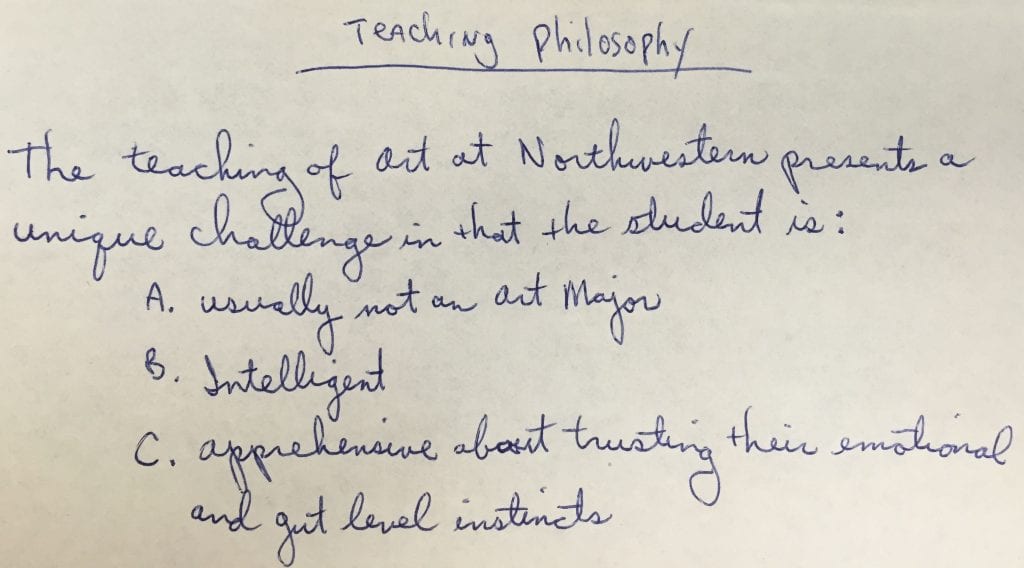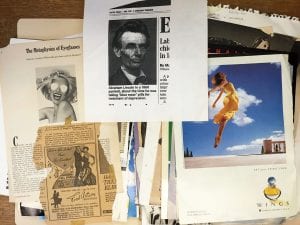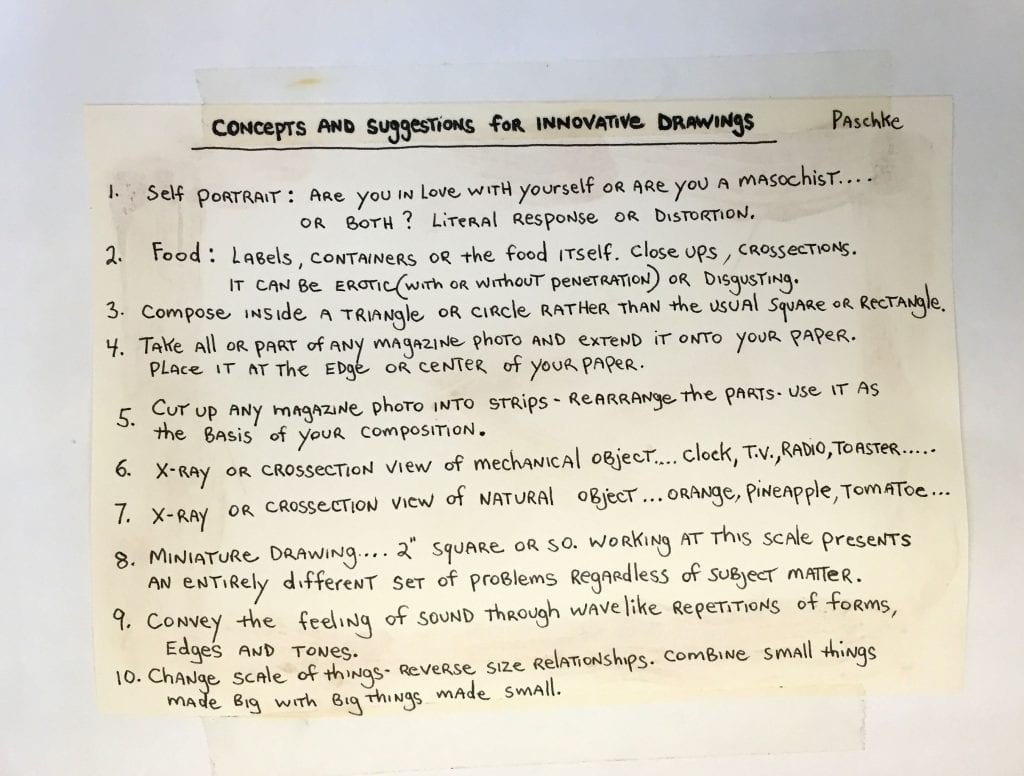By Jason Nargis, Special Collections Librarian
What role does teaching play in the creative process of an artist? This is a question that began to intrigue me several years ago as I was processing the archive of the painter and Northwestern professor, Ed Paschke. For many early-career artists, teaching is often a day job that supports continued painting, writing, or composing. I kept wondering why a painter who had been honored with a retrospective at the Art Institute of Chicago (AIC) and the Pompidou Centre in Paris, and who had a sustained history of lucrative international art sales, would continue to teach introductory studio art classes.
Much like one of Paschke’s paintings, the answer turned out to be complex, multi-layered, and surprising.
My curiosity about this subject grew to form the basis for a year-long Kaplan Library Fellowship that I received in 2014-15. My project, “Signal and Noise: The Art and Teaching of Ed Paschke,” explored the motivations behind Paschke’s 26 years of dedication to teaching and the intersections between his pedagogical practice and his painting practice. My research included extensive reading of the existing scholarship on Paschke’s career, processing Northwestern’s archive of his materials, and partnering with the Ed Paschke Art Center in Jefferson Park to begin to organize and describe another set of Paschke archival material housed there. I also interviewed former students, educational colleagues, studio assistants/mentees, and fellow artists about the role of teaching in Paschke’s life and work.
Despite all this investigation, the best source of information on what teaching meant to Ed Paschke turned out to be Ed Paschke himself. It was a theme that he brought up in many interviews; he wrote about it for numerous Northwestern publications, and he spoke of it at length in raw video footage for the documentary film Pigmentata, produced in relation to his AIC show. While people would often ask him why he still taught, his teaching was central enough to his understanding of himself as a painter that he would often expound upon it without prompting. It was simply an integral part of his aesthetic experience of the world.

Still from the documentary film Pigmentata.
Paschke saw the income from teaching as a way to protect against making artistic decisions that were fueled by financial conservatism. It was also a way to continue the “problem-solving” process of making art, but in a social and verbally communicative setting which both balanced out the solitude of studio work and also opened new perspectives and solutions.
Finally, Paschke just really liked teaching and took great satisfaction in imparting knowledge to students. I found several interviews where Paschke referred to himself as a painter/professor, emphasizing the interrelatedness of those roles; how teaching, mentoring, and modeling could function as a kind (or at least continuation) of his artistic production.

The Ed Paschke Papers contain a wealth of material that shed light on his work and thought processes as a teacher and painter, as well as a window into his personal and family life. The archive contains syllabi, correspondence, exhibit notices, photographs, art slides, and visual “source material.” I hope that this collection sparks some renewed interest in Paschke and engenders some fresh research on this towering local figure.

Visual source material from the Paschke collection.
I was honored to serve as a curatorial advisor for an upcoming exhibit that will highlight some of Paschke’s teaching materials, alongside artifacts from his studio, and examples of his printmaking process. From September 18 to December 9, 2018, the Block Museum of Art is hosting an exhibit titled, “Break a Rule: Ed Paschke’s Art and Teaching,” curated by 2017–18 Block Museum Graduate Fellow Beth Derderian. The show brings together teaching materials from the Northwestern University Archive’s Ed Paschke (1939-2004) Papers, prints from the Block’s collection, and material on loan from the Paschke family.
According to the Block website: “The exhibit is organized around three tenets at the core of Ed Paschke’s teaching and artistic practices: learn the rules in order to break them, trust your instincts, and get out of your comfort zone.”

